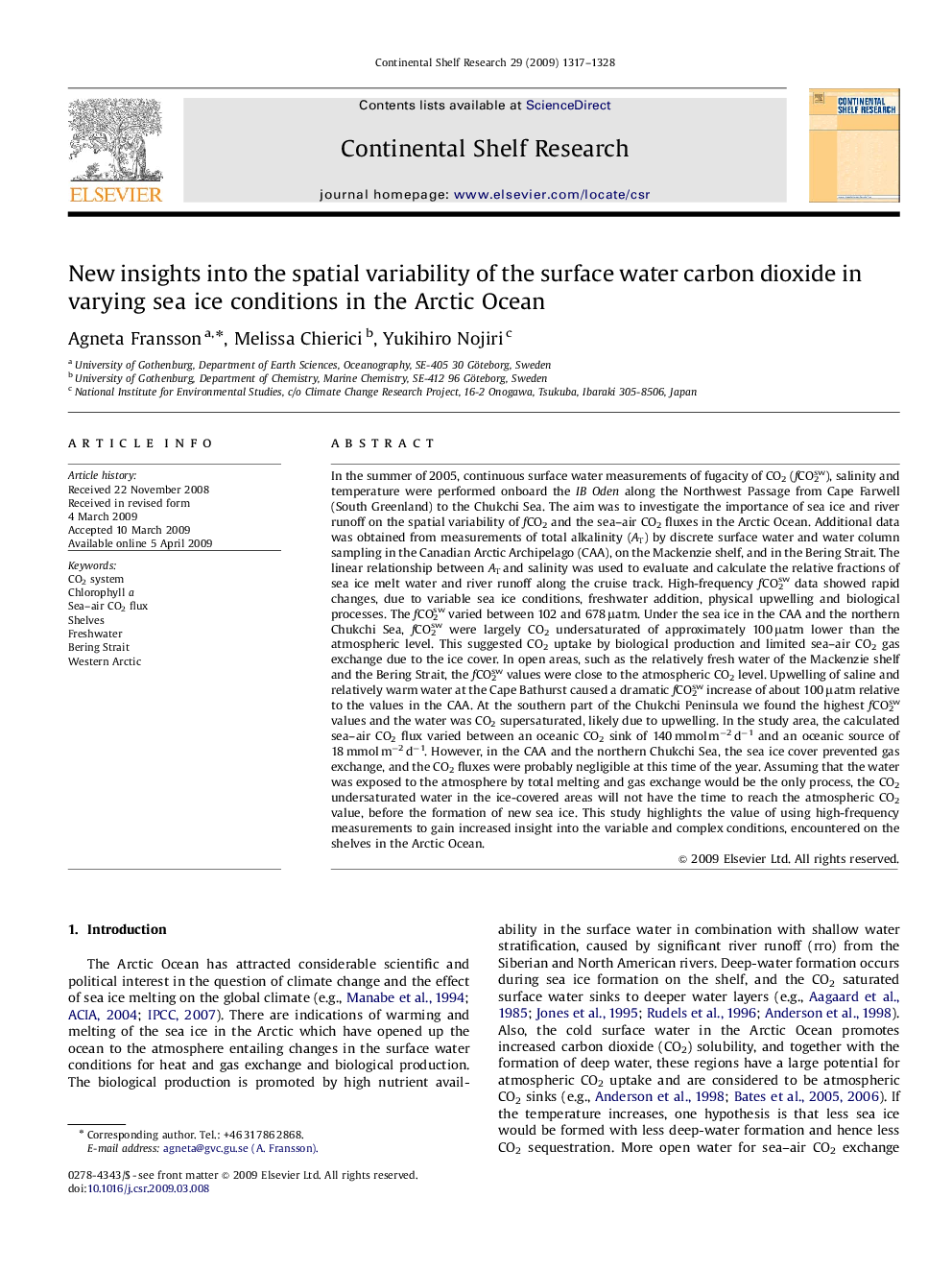| Article ID | Journal | Published Year | Pages | File Type |
|---|---|---|---|---|
| 4533024 | Continental Shelf Research | 2009 | 12 Pages |
In the summer of 2005, continuous surface water measurements of fugacity of CO2 (fCO2sw), salinity and temperature were performed onboard the IB Oden along the Northwest Passage from Cape Farwell (South Greenland) to the Chukchi Sea. The aim was to investigate the importance of sea ice and river runoff on the spatial variability of fCO2 and the sea–air CO2 fluxes in the Arctic Ocean. Additional data was obtained from measurements of total alkalinity (AT) by discrete surface water and water column sampling in the Canadian Arctic Archipelago (CAA), on the Mackenzie shelf, and in the Bering Strait. The linear relationship between AT and salinity was used to evaluate and calculate the relative fractions of sea ice melt water and river runoff along the cruise track. High-frequency fCO2sw data showed rapid changes, due to variable sea ice conditions, freshwater addition, physical upwelling and biological processes. The fCO2sw varied between 102 and 678 μatm. Under the sea ice in the CAA and the northern Chukchi Sea, fCO2sw were largely CO2 undersaturated of approximately 100 μatm lower than the atmospheric level. This suggested CO2 uptake by biological production and limited sea–air CO2 gas exchange due to the ice cover. In open areas, such as the relatively fresh water of the Mackenzie shelf and the Bering Strait, the fCO2sw values were close to the atmospheric CO2 level. Upwelling of saline and relatively warm water at the Cape Bathurst caused a dramatic fCO2sw increase of about 100 μatm relative to the values in the CAA. At the southern part of the Chukchi Peninsula we found the highest fCO2sw values and the water was CO2 supersaturated, likely due to upwelling. In the study area, the calculated sea–air CO2 flux varied between an oceanic CO2 sink of 140 mmol m−2 d−1 and an oceanic source of 18 mmol m−2 d−1. However, in the CAA and the northern Chukchi Sea, the sea ice cover prevented gas exchange, and the CO2 fluxes were probably negligible at this time of the year. Assuming that the water was exposed to the atmosphere by total melting and gas exchange would be the only process, the CO2 undersaturated water in the ice-covered areas will not have the time to reach the atmospheric CO2 value, before the formation of new sea ice. This study highlights the value of using high-frequency measurements to gain increased insight into the variable and complex conditions, encountered on the shelves in the Arctic Ocean.
